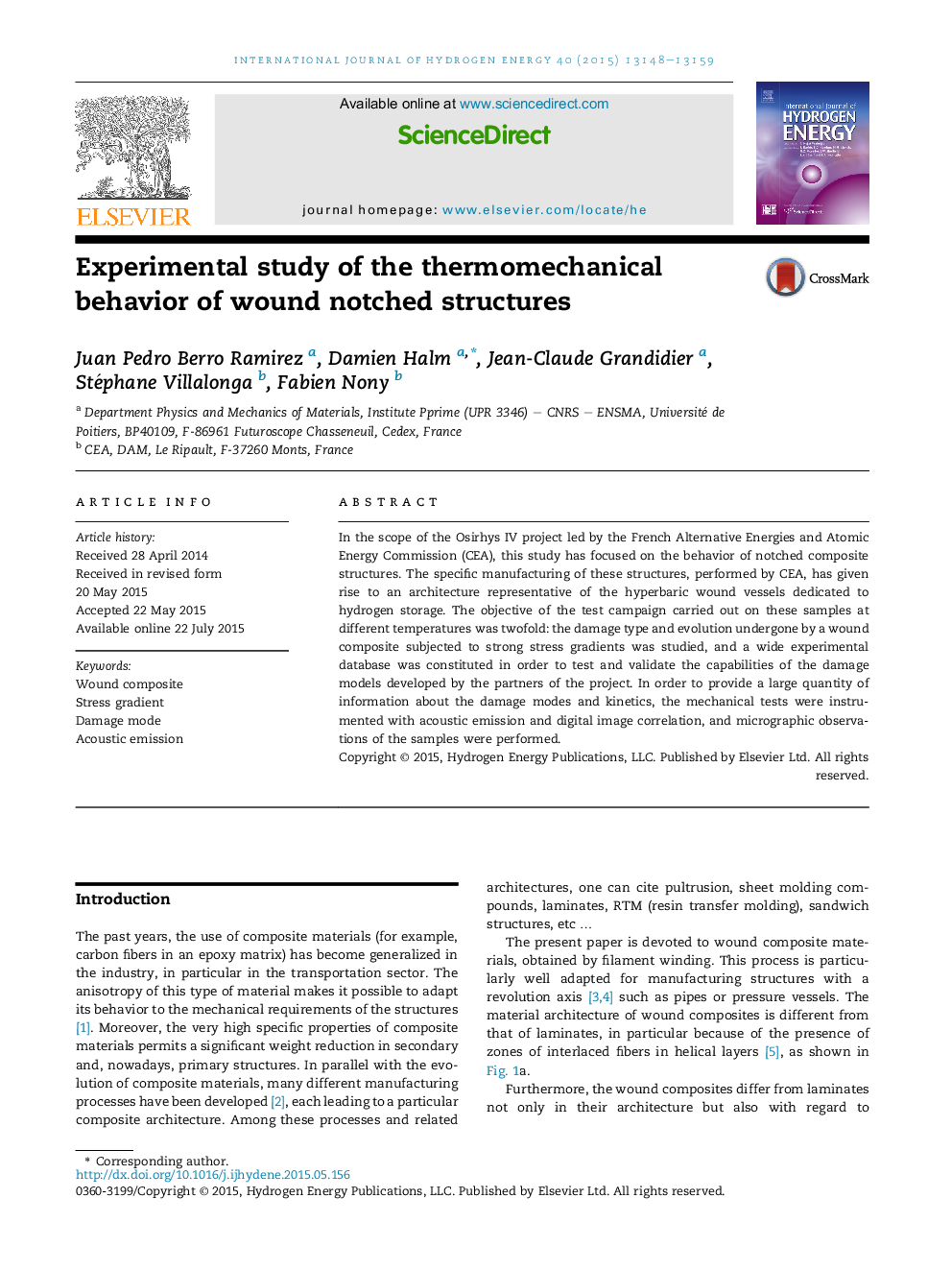| Article ID | Journal | Published Year | Pages | File Type |
|---|---|---|---|---|
| 1269231 | International Journal of Hydrogen Energy | 2015 | 12 Pages |
•Specific behavior of notched wound composite specimens at different temperatures is identified.•Damage is monitored by tensile tests, acoustic emission and micrographies.•Role of fiber interlacing and matrix viscosity on mechanical behavior is highlighted.
In the scope of the Osirhys IV project led by the French Alternative Energies and Atomic Energy Commission (CEA), this study has focused on the behavior of notched composite structures. The specific manufacturing of these structures, performed by CEA, has given rise to an architecture representative of the hyperbaric wound vessels dedicated to hydrogen storage. The objective of the test campaign carried out on these samples at different temperatures was twofold: the damage type and evolution undergone by a wound composite subjected to strong stress gradients was studied, and a wide experimental database was constituted in order to test and validate the capabilities of the damage models developed by the partners of the project. In order to provide a large quantity of information about the damage modes and kinetics, the mechanical tests were instrumented with acoustic emission and digital image correlation, and micrographic observations of the samples were performed.
